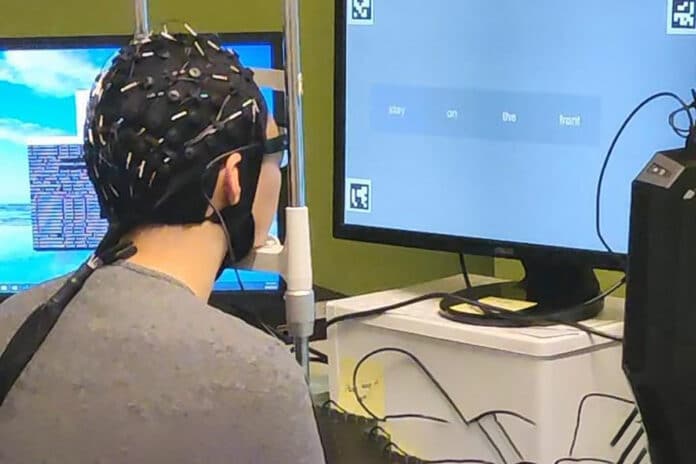For individuals who are unable to speak due to illness or injury, assistive technologies are essential in restoring communication and improving their quality of life. Losing the ability to speak can result in isolation, frustration, and a diminished sense of autonomy, which can have a significant impact on an individual’s emotional and mental well-being.
According to the World Health Organization, about 15 million people worldwide suffer a stroke each year, and many survivors experience speech-related difficulties. Assertive technologies such as augmentative and alternative communication devices, eye-tracking technology, and speech-generating devices can help individuals with speech impairments to express themselves and interact with others.
However, these existing communication options to translate brain signals to language have either required surgery to implant electrodes in the brain, such as Elon Musk’s Neuralink, or scanning in an MRI machine, which is large, expensive, and difficult to use in daily life.
To address these issues, researchers from the University of Technology Sydney (UTS) have developed a portable system that can decode silent thoughts and turn them into readable text.
This new type of assistive technology is faster and more natural to operate and is accessible to nearly everyone. Apparently, the system measures brain activity without the need for surgical implantation of probes into the brain. Instead, it uses an electroencephalogram (EEG) cap to measure brain signals, which offers a frictionless solution for translating thought into speech.
The interesting study involved participants silently reading passages of text while wearing a cap that recorded electrical brain activity through their scalp using an EEG. The EEG wave is segmented into distinct units that capture specific characteristics and patterns from the human brain.
The researchers developed an AI model called DeWave to overcome the challenge of capturing poor-quality signals from EEG. DeWave translates raw EEG waves into words and sentences by training the model on large quantities of EEG data paired with the corresponding words or phrases that were spoken at the time of the recording.
“This research represents a pioneering effort in translating raw EEG waves directly into language, marking a significant breakthrough in the field,” said Distinguished Professor Lin.
“It is the first to incorporate discrete encoding techniques in the brain-to-text translation process, introducing an innovative approach to neural decoding. The integration with large language models is also opening new frontiers in neuroscience and AI,” he said.
Although EEG signals can differ significantly between individuals, DeWave was found to be more robust and adaptable than many existing technologies after a study involving 29 participants.
However, there is still much work to be done, as the current translation accuracy of the interface stands at about 40%. But the team wants work to boost that to 90%. Also, they noted that DeWave can translate verbs much easier than nouns, indicating that there are additional areas in need of improvement.
Despite the challenges, this breakthrough technology has the potential to aid communication for people who are unable to speak due to illness or injury. It could also be used to enable seamless communication between humans and machines, which could revolutionize the way we interact with technology.
